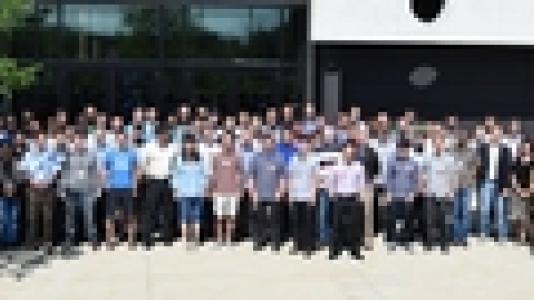
PETSc has won numerous awards in the past two decades and is one of the world’s most widely used software libraries for high-performance computational science.
The event brought together PETSc users and developers from national laboratories, academia, and industry, who presented science advancements enabled by PETSc features and functionality. Attending the celebration were more than 100 participants from Argonne, Oak Ridge, Lawrence Berkeley, Idaho, and Sandia National Laboratories, as well as universities and industry in the U.S. and Argentina, Austria, Canada, England, Germany, Italy, the Netherlands, Saudi Arabia, Spain, and Taiwan. The first morning began with a tutorial on PETSc, including its structure and solvers as well as techniques such as debugging and preconditioning. The tutorial was followed by a hands-on interactive session extending into early afternoon. The remainder of the day comprised presentations on three popular simulation packages, MOOSE, TAO, and SLEPc, each of which uses PETSc.
The following two and a half days were devoted to a conference in which researchers discussed new methods — scalable parallel solvers, particle-in-cell methods, and mesh management techniques – and time-dependent simulation and simulations on power networks. Several presentations focused on large-scale applications codes utilizing PETSc — from materials science to cloud evolution to computational cardiology. Also featured were two panel sessions, one on advances needed to enable algorithms, libraries, and applications to move beyond traditional forward interpretive simulations to so-called outer loop computations that involve sensitivities, optimization, and design, and the other on innovative strategies beyond software libraries for more effectively leveraging community results.
Interactive electronic poster sessions held the second and third afternoons also gave participants — members of the PETSc team as well as application developers and designers of software packages using PETSc — the opportunity to present their work.
The participants also brainstormed on building toward the future. Topics ranged from new science challenges on emerging architectures to novel programming models for high-performance computing simulations and issues in interoperability among complementary tools.
The tutorial and workshop were supported by the Computing, Environment, and Life Sciences directorate of Argonne. For further information see http://www.mcs.anl.gov/petsc/petsc-20.html.